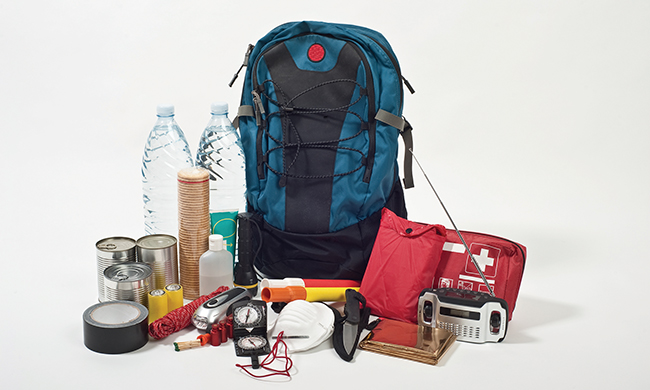(Family Features) Emergency situations, especially those that pertain to natural disasters, can be difficult to recover from without proper planning, which is why it’s important to take small steps from the start to help protect your family.
With the change of seasons comes an increased risk of weather-related emergencies. This fall, Clorox has partnered with the American Red Cross to encourage everyone to be “Red Cross Ready.”
Consider these three actionable steps to get your household ready for an emergency:
Prepare a kit: At minimum, you should have an emergency kit assembled with basic supplies. Depending on the circumstances, you may need to evacuate versus remaining in your home, which will affect the amount of supplies you need. A good rule of thumb is a three-day supply if you are evacuating and a two-week supply if you’ll be in your home.
- Water: Keep one gallon per person, per day
- Food: Stock up on non-perishable, easy-to-prepare items.
- Disinfecting bleach: After a natural disaster, water may not be safe to drink. A few drops of an option like Clorox Disinfecting Bleach can be used to make water potable and can also help clean up mold and fungi from a buildup of excess moisture. Always pay close attention to the label to be sure you are following exact dilution instructions.
- Flashlight (and extra batteries): Having a flashlight ensures that you’re able to navigate in the dark if the electricity goes out. Always keep extra batteries on-hand to power your flashlight and other items you may need.
- First aid kit: In cases of emergency, first-aid supplies are crucial to help keep family members as safe and healthy as possible. Make sure to stock the kit with things like bandages, gauze and antibiotic creams.
- Multi-purpose tool: Tools with multiple functions can be used for everything from cutting wire to opening bottles.
- Sanitation and personal hygiene items: In addition to disinfecting bleach, it’s important to keep things like moist towelettes, garbage bags and plastic ties for personal cleanliness.
Make a plan: Discuss how to prepare with your family or household members and talk about the best ways you can respond to the types of emergencies that are most likely to happen where you live, learn, work and play. Identify responsibilities for each member of your household and how you will work together as a team. Practice as many elements of your plan as possible.
Be informed: As an emergency is unfolding, normal communication systems like phone lines may be damaged or overloaded by call volume. Consider downloading smartphone apps such as the Red Cross Emergency App for customizable weather alerts, the “I’m safe”feature and other resources. It provides instant access to information for handling common first aid emergencies. You can also get trained in first aid and CPR so you’ll know what to do in case emergency help is delayed.
After a natural disaster, a safe and healthy recovery is key. Listen to local authorities and take safety precautions in case of storm aftershocks. Only use cellular or landline phones to report life-threatening conditions, keeping lines open for emergency responders. Return to your home only when authorities advise it’s safe to do so, making sure to also have photo identification to prove residency.
Learn more at clorox.com/redcrossready.
Photo courtesy of Getty Images
SOURCE:
Clorox




















